Health and Safety? Yeah, right!
- Nick Evans
- Jun 25, 2025
- 7 min read
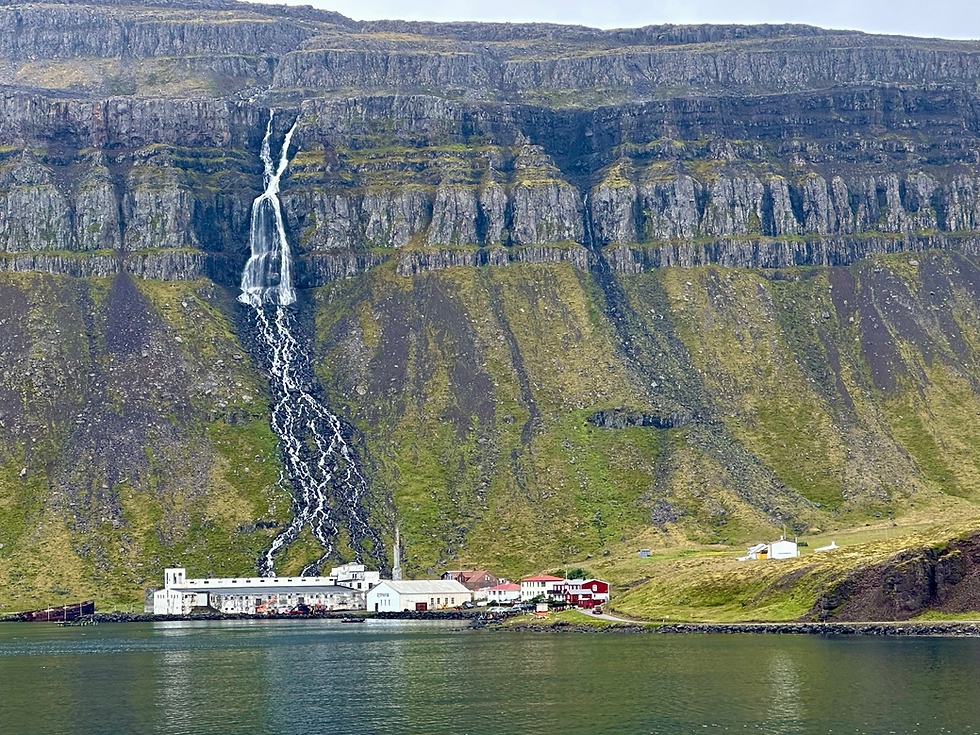
Malmay Island was our third tour of the day yesterday, but thankfully no Zodiacs this time! This was simply a cruise by so the island slid by as we ate dinner and then slid by again as the ship rotated around its southern end and traversed the other side. Legend has it that the island bears curses, foretelling doom for any family that dares to inhabit it for over twenty years. Whispers say that any housewife who dares to test this is doomed to a grim fate of madness and disappearance, while another legend states that horses and mice cannot remain on the island. It has lain uninhabited since a devastating fire wiped out a small farming community of 14 people in 1950 - aside from the abundant birdlife, which can be spotted on the cliffs and swirling above the waters. Massive breaching whales and lazy seals are also regular visitors to these waters although we didn’t see any.
So today, Wednesday, we are starting our second week. It seems much more than a week that we have been on board Silver Wind and this is a curious effect of cruising where there is a lot of activity. On this cruise we have either done one long activity or two and sometimes three shorter ones each day. It’s exhausting and, yes, we shall need a holiday after it.
This morning we arrived at Djúpavík in the North West of the island. Today’s delights include a trip to this “secret village” and a visit to a derelict herring factory. We awake bright and breezy, despite last night’s delicious red wine. The very first thing we are told is that there’s an issue with the landing pontoon against which the Zodiacs would dock. Apparently it’s no longer available for our use and so the engineering team have zoomed off to scope out a different landing method. It transpires that this will be a pebble landing, pulling the boats up onto the shingle and then tossing the guests out one by one onto a variety of pallets and boxes. That’s our guess anyway. We had good practice for this at Tumavík!
We are now past masters of the techniques of embarking and disembarking these large rubber boats. If we are getting on or off at the ship’s own built-in pontoon then it is a case of shuffling your bum along the boat’s edge until you are next to the temporary step. Then hand your backpack to the able seaman, grab his wrist with a sailor’s grip and get passed up onto the edge where two other guys grab you the same way and haul you ashore. It’s become a slick process. However, when it’s a beach landing, it’s different because you sit on the edge, swing your legs over and drop your feet onto a pallet that is hopefully at that moment not under water. The same people grab you, often up to their thighs in water and steady you along a stepping stone causeway of boxes until you reach shore. For them it’s exhausting and for us it’s exciting.
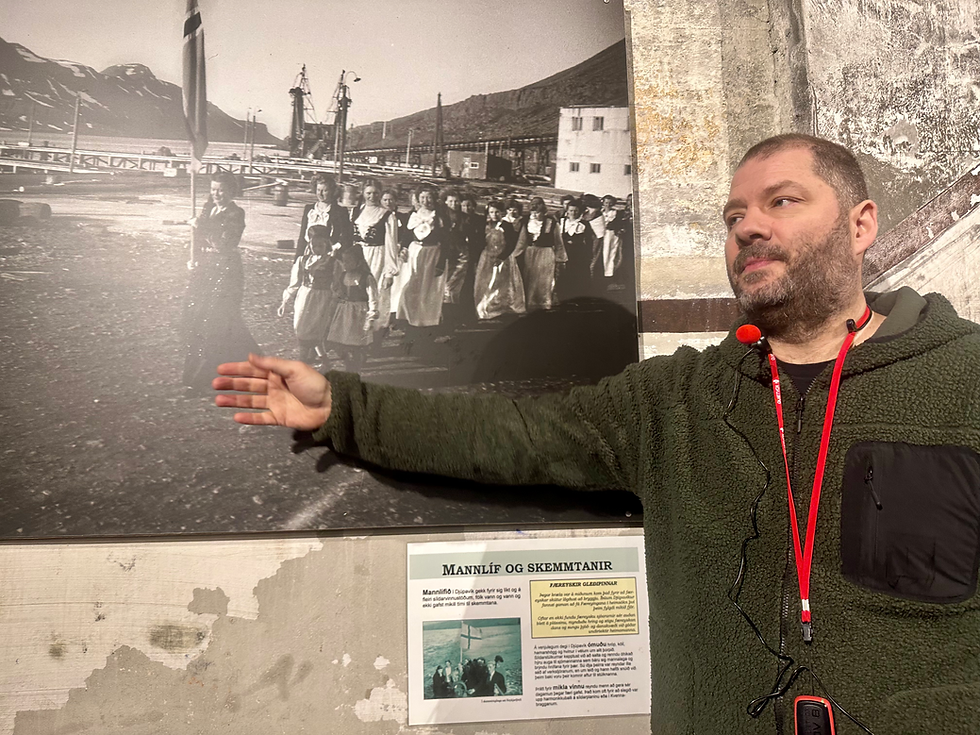
The actual content of today’s tour is something of a mystery but we have confidence that it will be good and we arrive when our code is tannoyed. On to the shoreline and we head, crocodile style, to the herring factory. This ugly concrete building stands right below a beautiful waterfall that dominates the skyline.
This is a very deep fjord, meaning that fishing boats can approach close to the shore without the need for a harbour. There is ample water supply from the fall, which is essential for the fish processing that took place here.
At one time it was the biggest fish factory in Europe and it was the biggest concrete building in Iceland at the time. It was built in 1934 by 30 men in fewer than two years, funded by a Swedish bank loan of 800,000 kr. which was paid off in two years. Even now, in its dereliction, it contains massive metal machinery and generators, some of which were originally salvaged from German submarines.
Originally the factory undertook simple fish processing for eating where groups of girls were salting herring into barrels. They were paid a token for each barrel they filled and cashed them in for money at the end of their shift. It was backbreaking work and the constant smell of herring guts and the effects of salt on the girls’ hands made for an unpleasant working environment. Worse still, they worked outside and were piece work contractors while the men working in other parts of the factory were employed and enjoyed a hot meal as part of their deal. The girls got nothing. However, there were hot showers - a byproduct of the processing - and the owners were generally benign. The girls slept eight to a room in what is now a hotel while the men slept in a derelict ship that was cold and uncomfortable. Sometimes there would be liaisons between them and they would head for the hills in tents. One peculiar sidelight was the fact that María Guðmundsdóttir, the daughter of the manager, became Miss Iceland in 1961 and went on to have a career as a supermodel and filmmaker. And she’s still alive.
Two other processes came on stream here: the squeezing of oil from the fish and then the production of herring meal for fertiliser and animal feed from the remains of the pressed fish. This was loaded into 100kg sacks that were lifted by one man.
The factory ran 19 years until 1954 and, at its peak, 300 people worked there. It was a risky business because herring are not reliable in behaviour, sometimes arriving in huge shoals and then as suddenly disappearing. In 1980 the last people left and the factory fell into dereliction. Some people then bought the adjacent building for a hotel and set about preserving the by now dangerous factory. To say that it’s been made safe is something of an overstatement. There are trip hazards, drops and dodgy woodwork everywhere - a safety officer’s nightmare. Yet the enthusiasm and love that the owners lavish on this money pit is wonderful to behold. They have tourists arriving from all over the world who then totter perilously through the ruins to gaze in wonder at long dead rusty machines.
Frankly, it’s a crazy project to save the building. It hoovers up money from the owners and from the government but still they continue, despite the privations of the climate and the steady march of time. Recycled windows for example came from a building owned by Esso. Even with all this work, inside it still appears derelict with rusty machinery. It felt to us to be an accident waiting to happen and although we were all cautioned to proceed carefully, the casual safety features really are insufficient for the needs of a tourist attraction.
Nonetheless, they supplied us all with Happy Marriage cake that is rather like solidified rhubarb crumble. Absolutely delicious! You can find a recipe here at the end of a long blog post.
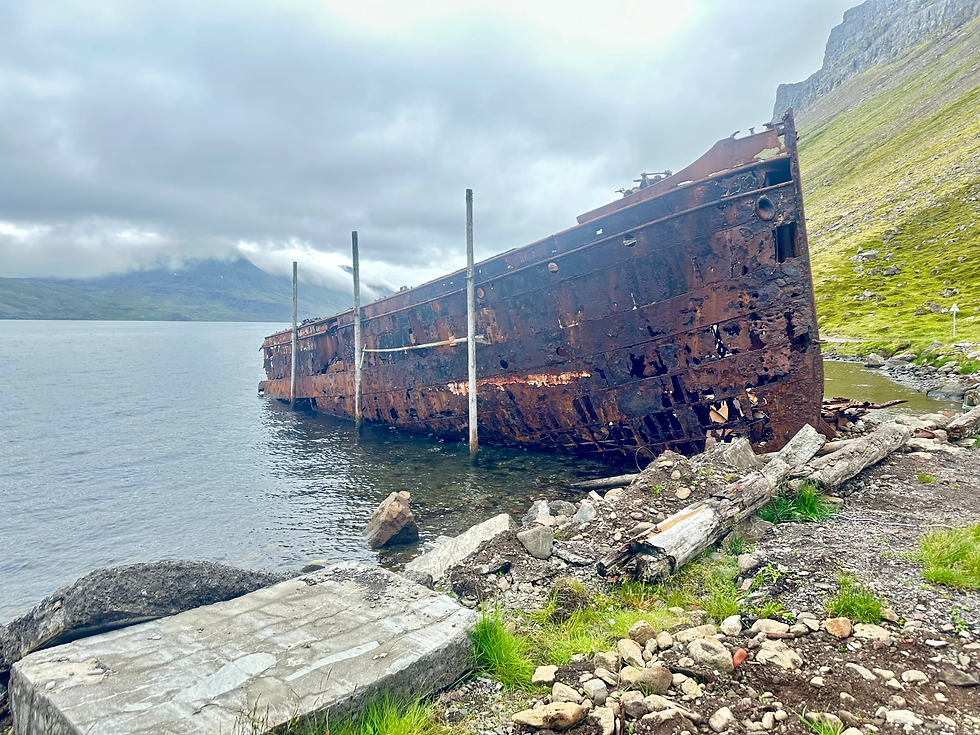
Outside there are the old fish oil tanks that are huge and open to the elements. There also remains the wreck of the boat that had been sleeping quarters for the men. As we approached it we were attacked by Arctic Terns which are vicious little devils that we first encountered on Svalbard. They prevented us from investigating any other part of the village so we hot footed it back to the ship for coffee and lunch.
Intrepid. I think that’s the word for us. Out of all the ship’s passengers only about 25-30 turned up for this afternoon’s Zodiac cruise around Veiðileysufjörður. However, your intrepid seekers after experience were there, at the forefront, pushing the frontiers of expedition tourism in the hunt for new … ok, enough. But we felt good to be out in the fresh air, bouncing over the swell at speed and seeing Icelandic life up close and personal.
Meanwhile, my brother-in-law - another Nick - and Sue have visited our house in hot weather gear to water the garden. At the same time as we put on our thermals!
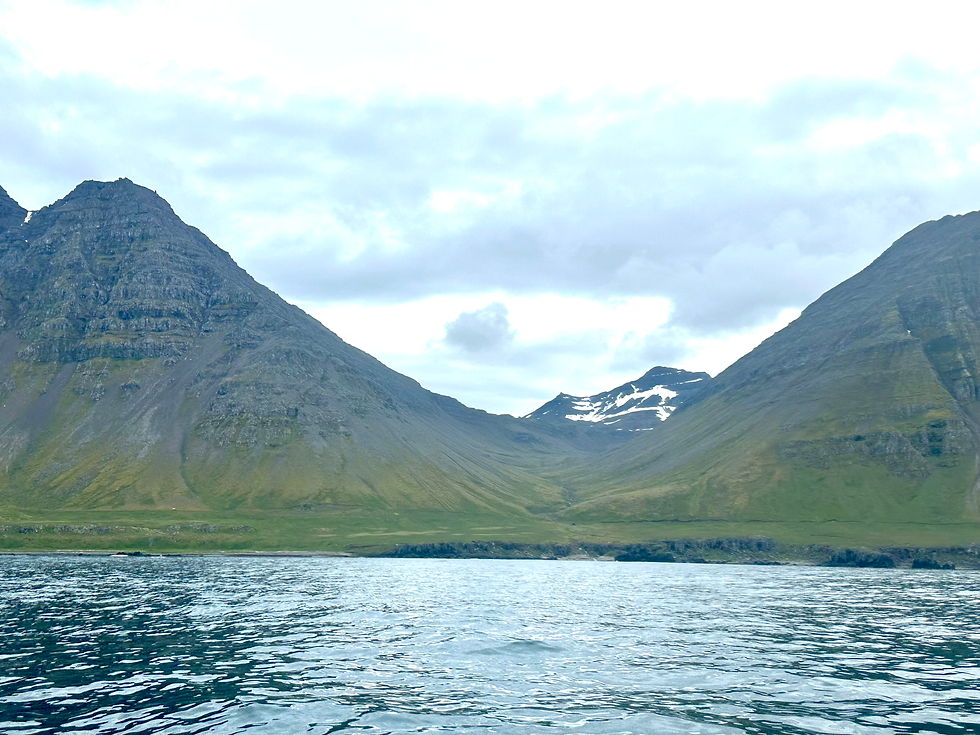
Our guide and pilot, Kelly, took us across the fjord to see the dramatic mountains that were carved and shaped by glaciation, pinnacles of rock standing above the areas where the power of the glacier had ground out the unique shaped valleys and left moraine deposits at the end. Now though the glaciers are gone from this area as in so much of the world and what remains is a very sculpted landscape.
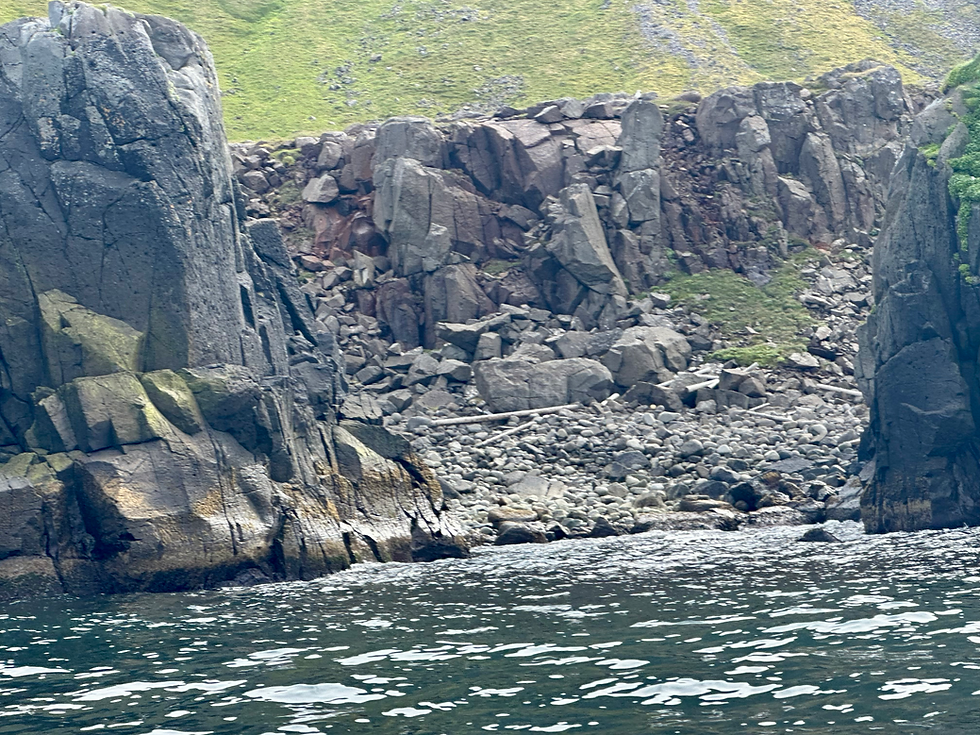
On the shoreline, driftwood gathers, having travelled possibly thousands of miles from Russi and found its way to the shingle beaches here. Iceland has few trees because first of all the Vikings cut them all down and then the harsh winters made it impossible for anything other than hardy, low shrubs to survive. Driftwood was a valuable commodity for Icelanders as it was their only source of timber for building or fuel.
As we know, every day is a school day and we learned today why birds have coloured feet. Their fitness to breed shows through the intensity of the colour: the more healthy the bird, the brighter the feet!
And finally, today is one for celebration. After all these years and so many attempts, I was finally right. For once. I asked our pilot how far away we were from the ship and she said it was just that far and then checked her GPS. A little competition between all of us on the Zodiac established a range from around 1-2km to 5km. The latter was my answer and I was told by my beloved that it was nonsense and not possible that we were so far away. The answer? 6.5km. I was the closest. It was a proud moment that I shall revisit and tell my grandchildren about.
Then we had a very exhilarating and bumpy ride back to the boat. All 6.5km of it.
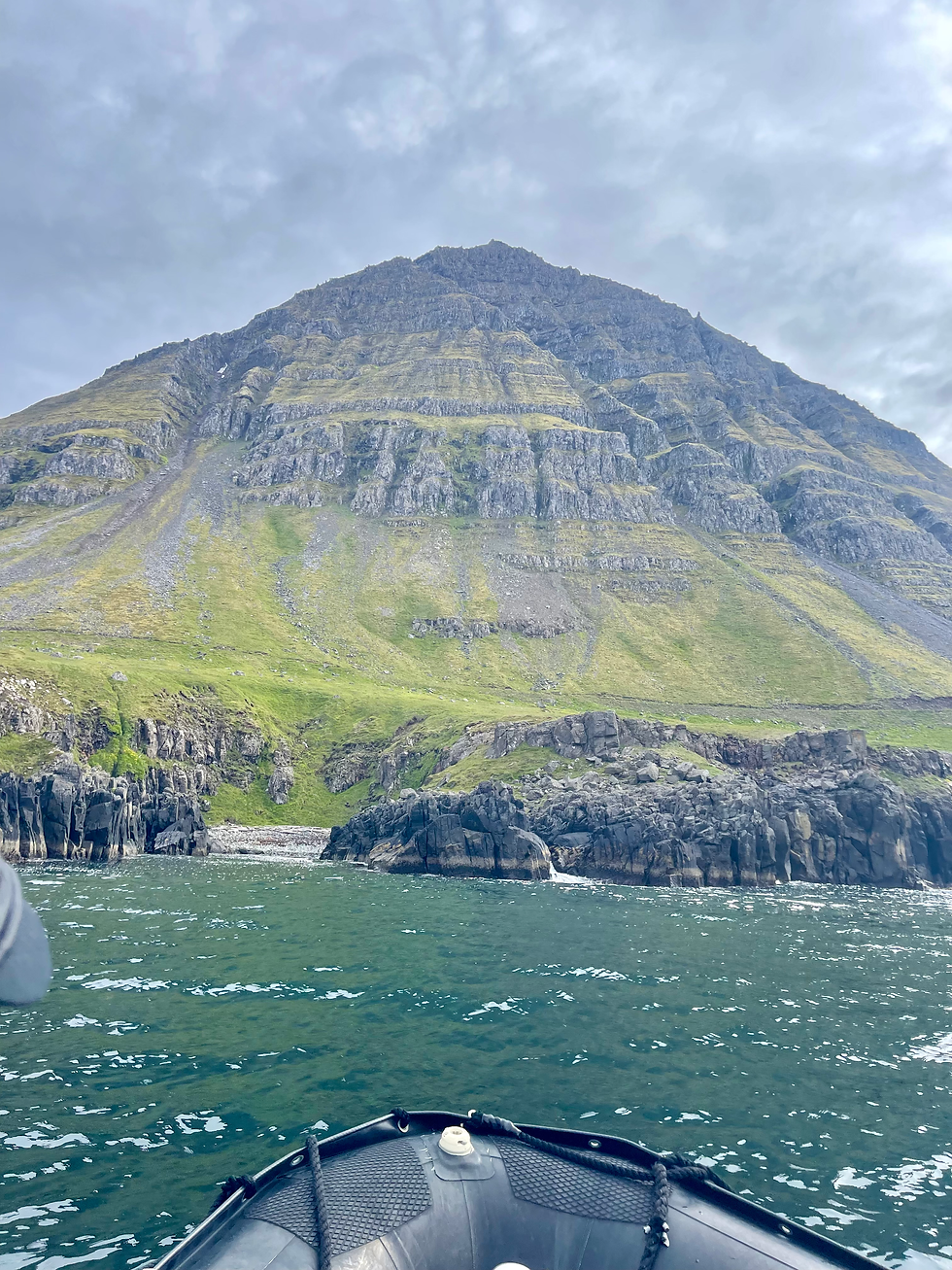




















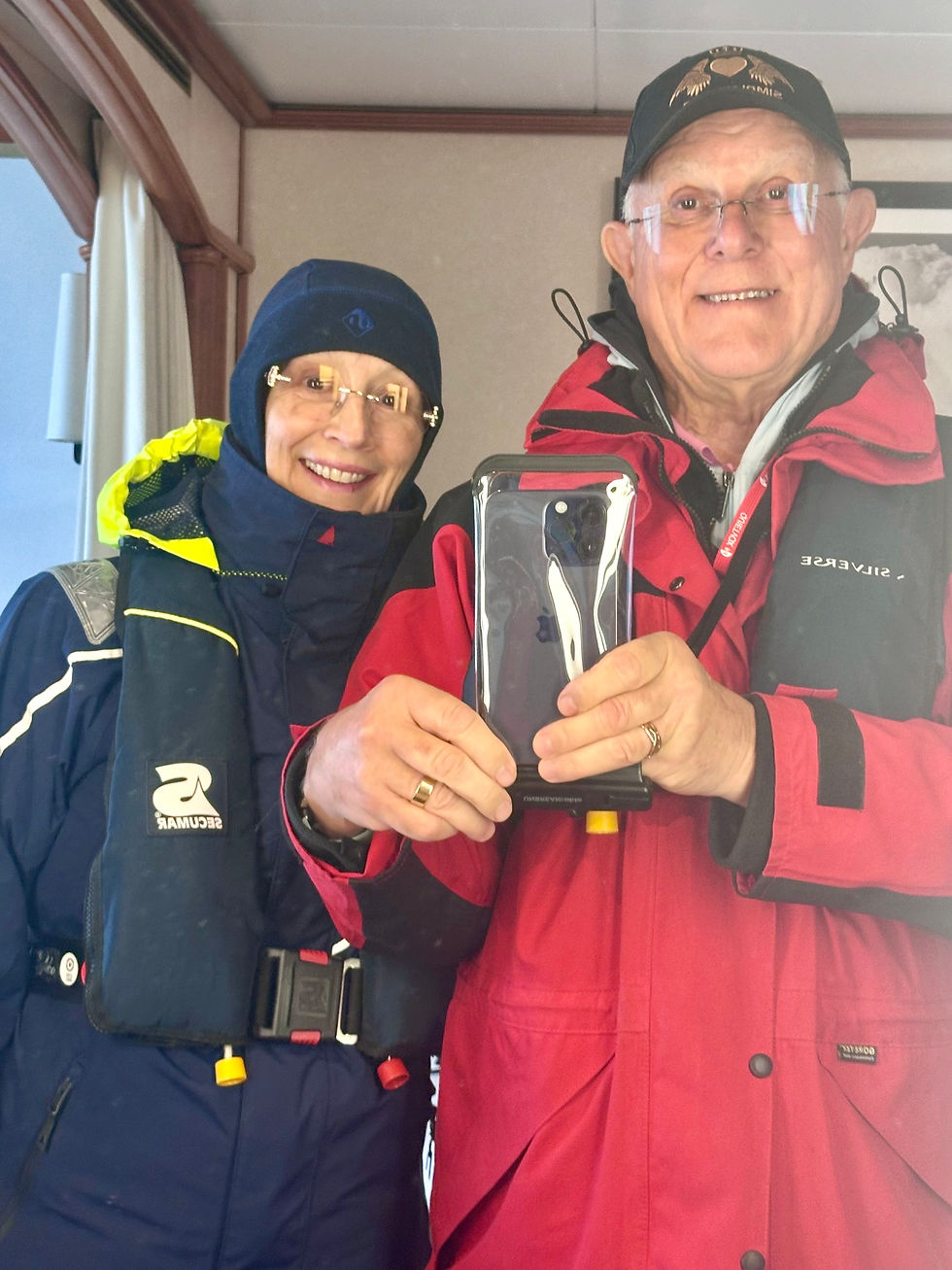
Wow another varied day -does sound like you'll need a holiday after this! The views are stunning, love that glaciated valley.